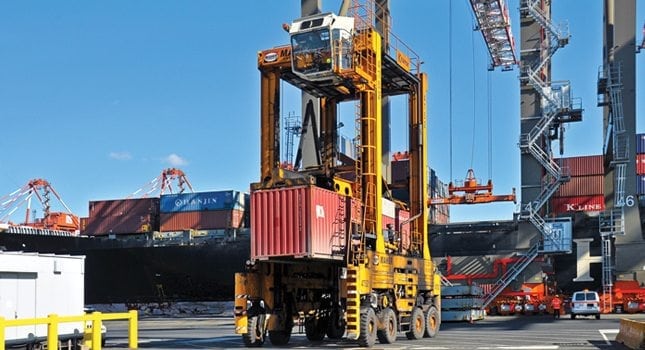
Port Authority Receives Grant for Continued Post-Sandy Recovery Efforts
On May 29, 2014The Port Authority’s ongoing efforts to clean-up residual damage to the PATH rail system left behind by Superstorm Sandy’s floodwaters will be boosted by an additional $167 million grant being provided by the Federal Transit Administration.
This new funding is part of $1.3 billion in recovery funding already allocated by the FTA to PATH to help undo the devastating impacts of Sandy throughout the PATH system, including corrosive salt damage to tunnels, rails, cables and other equipment.
Grant funding has helped the Port Authority remove lingering latent salt residue left by the extensive flooding inside the PATH rail tunnels, implement resiliency measures and will help purchase new items like flatcars, high-volume power washers and high-capacity pumps.
Work has been ongoing on weekends throughout 2014 to help clean the tunnels of the corrosive salt remaining after initial cleaning efforts in the wake of the 2012 storm got the system back up and running. Currently, the PATH line closes the World Trade Center and Exchange Place stations from late Friday nights to early Monday mornings to help complete this work. Cognizant of community impact, ferry service has been established as an alternative transportation mode during the work.
“The FTA, along with the Federal Railroad Administration and other federal agencies have been invaluable partners over the past year-and-a-half, beginning the night of the storm, helping to ensure the PATH system is returned to a state-of-good-repair and maintains safe operations following Sandy,’’ said Port Authority Executive Director Pat Foye. “The work of the bi-state Congressional delegation and the FTA will help the Port Authority recover 90 percent of the costs to fix this vital rail line for residents of New York and New Jersey.”
“This $166 million grant is another example of the federal government keeping its pledge to help the region recover from Sandy,’’ said Port Authority Deputy Executive Director Deb Gramiccioni. “The FTA recognizes PATH’s critical role in moving roughly a quarter-million people daily between New Jersey and New York as a vital component of the region’s economy.”
The Port Authority performed restoration efforts in the months after the PATH system suffered unprecedented damage in its tunnels in the fall of 2012. Millions of gallons of salt water flooded the system for several days, before massive pumping efforts successfully cleared the tubes.
Replacement of ruined cables, switches and the flushing of the tunnels, tracks and equipment made up a large component of this work. Nevertheless, PATH experienced an increase in Sandy-related maintenance and service issues, due to the corrosive effects of lingering salt residue left behind.
Ongoing efforts over the past year have included intensive power washing with solvents throughout the system, including the cast iron rings that comprise the original PATH tubes, along with replacement of damaged equipment.
In addition to removing the latent salt and neutralizing any residue, the work also will include repair or replacement of any compromised power and communication cables, running rail, third rail or trackside equipment.
Superstorm Sandy caused billions of dollars of damages to Port Authority facilities, including at the agency’s airports, seaports and bridges and tunnels, in addition to the PATH rail system. Numerous repair initiatives and enhanced mitigation efforts to help minimize damage from future storms has been ongoing at Port Authority facilities since Sandy’s devastation.
Improved measures to help prevent damage from future storms include the use of metal panels at PATH stations, temporary concrete barriers and water-filled Jersey barriers to protect doorways in buildings and the installation of permanent and mobile pumps, as well as the addition of generators at various facilities to ensure storm waters can be quickly pumped away. The agency’s preparations also include moving electrical and mechanical equipment to higher ground where feasible, increased use of water resistant materials to help prevent leaks and installation of barriers or perimeter walls where practical to further reduce potential flooding.
Related Articles:





